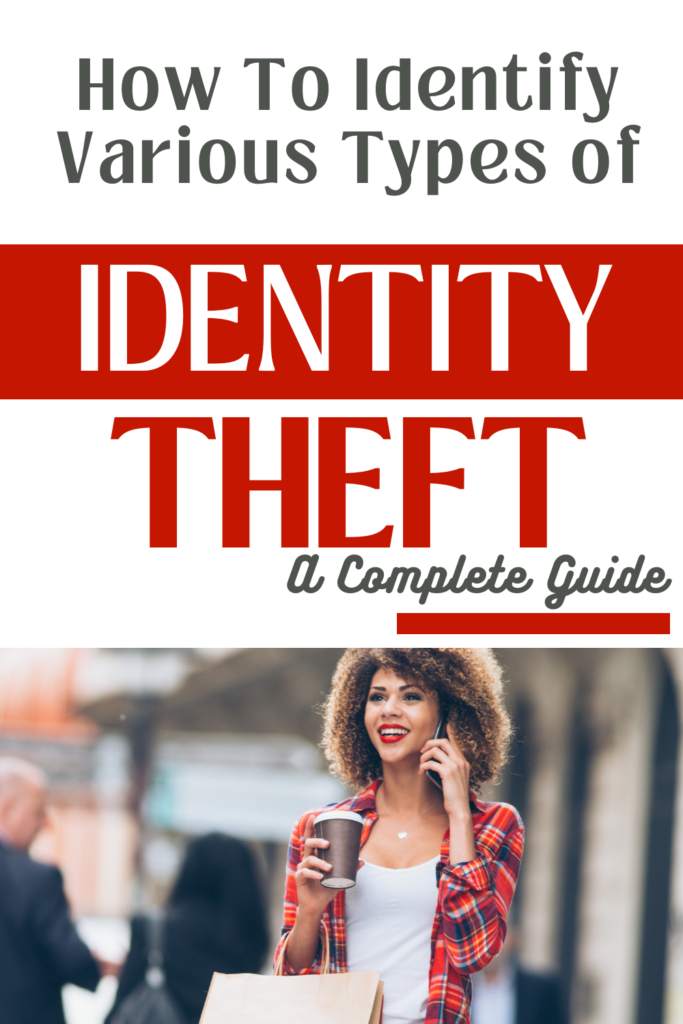 In an increasingly interconnected world digital transactions and online activities have become an integral part of our daily lives. Due to this fact, the threat of identity theft looms larger than ever. Identity theft occurs when an individual’s personal information is fraudulently used by someone else. This often results in severe consequences for the victim. In this blog post, we will discuss, “Unmasking the Shadows:” Exploring the various types of identity theft. We will also shed light on the tactics employed by cybercriminals and offer insights on how individuals can protect themselves in the digital age.
In an increasingly interconnected world digital transactions and online activities have become an integral part of our daily lives. Due to this fact, the threat of identity theft looms larger than ever. Identity theft occurs when an individual’s personal information is fraudulently used by someone else. This often results in severe consequences for the victim. In this blog post, we will discuss, “Unmasking the Shadows:” Exploring the various types of identity theft. We will also shed light on the tactics employed by cybercriminals and offer insights on how individuals can protect themselves in the digital age.
Financial Identity Theft: The Classic Con
Financial identity theft is perhaps the most well-known form of this crime. In this scenario, the perpetrator gains access to an individual’s financial information. This usually includes credit card details, bank account numbers, and Social Security numbers. Armed with this sensitive data, they can make unauthorized purchases, open new lines of credit, or even drain existing bank accounts.
To mitigate the risks associated with financial identity theft, individuals should regularly monitor their bank statements, set up alerts for suspicious activities, and scrutinize their credit reports for any unauthorized accounts. Additionally, employing strong, unique passwords and using multi-factor authentication can add an extra layer of defense against potential breaches.
Criminal Identity Theft: A Twist in the Tale
Criminal identity theft occurs when someone uses another person’s identity when interacting with law enforcement. This can lead to false criminal records, arrest warrants, or even imprisonment for crimes the victim did not commit. The consequences of criminal identity theft can be particularly devastating, as it may tarnish the victim’s reputation and lead to legal complications.
To guard against criminal identity theft, individuals should secure personal identification documents, such as driver’s licenses and passports. Reporting lost or stolen documents promptly and keeping a close eye on one’s criminal record through legal channels can help victims detect and rectify any instances of criminal identity theft.
Medical Identity Theft: Your Health, Their Wealth
Medical identity theft involves the unauthorized use of someone’s personal information to obtain medical services, prescription drugs, or submit false insurance claims. The consequences extend beyond financial loss, as inaccurate medical records may compromise the victim’s health and well-being.
To safeguard against medical identity theft, individuals should carefully review their medical bills and insurance statements for any discrepancies. Protecting health insurance cards and being cautious about sharing personal information with healthcare providers are essential steps in preventing this form of identity theft.
Child Identity Theft: A Silent Threat
Children are increasingly becoming targets of identity theft due to the clean slate of their personal records. Thieves can exploit a child’s identity to open fraudulent accounts, secure loans, or obtain government benefits. Since children typically do not monitor their credit reports, this form of identity theft can go undetected for years.
Parents and guardians must be vigilant in monitoring their child’s personal information, such as Social Security numbers, and should consider freezing their child’s credit until they reach an age where they need it. Regularly checking for pre-existing credit reports in a child’s name and educating them about the importance of safeguarding personal information are crucial preventive measures.
Synthetic Identity Theft: Creating Shadows (Exploring Various Types of Identity Theft)
Synthetic identity theft involves the creation of a fictitious identity using a combination of real and fabricated information. Instead of stealing an existing identity outright, perpetrators construct a synthetic identity that may include a legitimate Social Security number paired with false details. This method often involves gradually building credit over time to maximize financial gain.
Detecting synthetic identity theft can be challenging, as it doesn’t rely on the compromise of a single individual’s information. Financial institutions need to enhance their authentication processes and closely monitor new account applications for suspicious patterns. Individuals can also protect themselves by regularly checking their credit reports for any unusual activities.
Social Media Identity Theft: Unmasking Your Digital Persona
In the age of social media, our online presence holds significant value. Cybercriminals exploit this by engaging in social media identity theft, where they impersonate individuals to gather personal information, initiate phishing attacks, or even tarnish the victim’s online reputation.
To prevent social media identity theft, users should be cautious about the information they share online, employ privacy settings effectively, and avoid accepting friend requests or clicking on links from unknown sources. Regularly updating passwords and enabling two-factor authentication can provide an additional layer of security against unauthorized access.
Related Post: How Consumer Protection Laws Safeguard Your Every Purchase

Conclusion: (Exploring Various Types of Identity Theft)
Identity theft is a pervasive and evolving threat that requires constant vigilance and proactive measures to mitigate risks. As we navigate the digital landscape, understanding the various types of identity theft empowers individuals to safeguard their personal information and take preventive actions. By staying informed, adopting secure online practices, and leveraging available security measures, we can collectively contribute to creating a safer digital environment for ourselves and future generations.
Financial Identity Theft | Criminal Identity Theft | Medical Identity Theft | Child Identity Theft | Synthetic Identity Theft | Social Media Identity Theft
We’d love to hear from you! What is your biggest takeaway from this post on identity theft? Share with us in the comments below.
Cheers!






